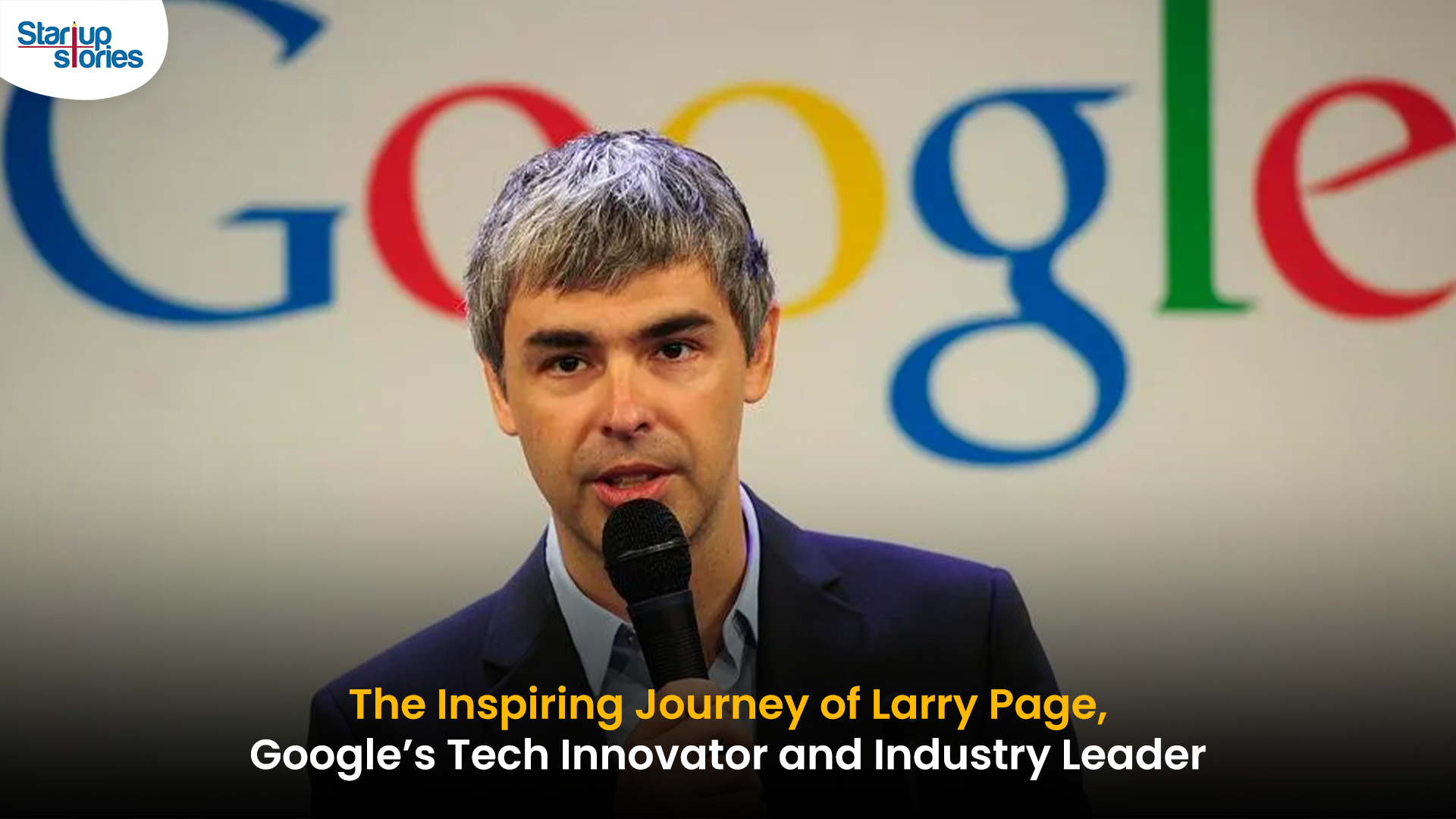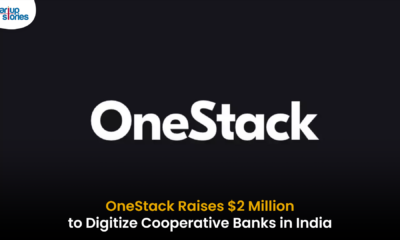Entrepreneur Stories
How To Use Psychology to Maximize Marketing Reach

With people realising the relevance of psychology in marketing, more and more brands are working toward attracting the emotional side of buyers. If you are looking at increasing your brand’s presence and to attract customers with a personal touch, here is how you can use the perfect combination of marketing and psychology!

1. Use Emotional Ideas
Emotions or sentiments always work when it comes to selling your product. When writing copy to go with your advertisements, words with an emotional connection always have a stronger impact on the audience. For instance, if you are selling a computer, write about its benefits in a way that instills a connection in a new way. An emotional connection while making a sales pitch always works, giving people a reason to buy the product.

2. Highlight your flaws
Understanding human psychology has always shown that it is important to highlight your flaws. When you do this, you let your customers know that you aren’t afraid of the things which are wrong with your product. Cater to your customers ego and make them feel listened to when you fix the flaws they say your product has. Not only does this make sure you earn your customers trust, it helps in increasing your brand’s value. For instance, Apple has always been extremely vocal about its multiple flaws but because they provide such value for its brand, people don’t shy away from the Company.

3. Use reward schedules
Rewards always work really well. By using the process of operant conditioning, the reward scheme works really well because it helps to understand what the customer really wants from the product. Behaviours are usually learnt over a period of time and if you tell people they are going to get random rewards at uncertain times, the attraction is stronger! When you go to a restaurant and get surprise freebies at the end of the meal, you want to keep going back, irrespective of the food. In this case, the reward is your enticer since you are attracted to the offering rather than the actual product.

4. Throw your customers an anchor
In most cases, when you leave customers with an open ended question, you realise people are more prone to coming to you for answers because of the half information. Called throwing an anchor or priming, this process works ethically and is used to attract a larger revenue through more customers. Find the gap and hook your customers on to that gap so as to instantly attract them. While a sure fire way of making more money, this process can be tricky because of the subtlety required to see it through.

5. Put your customers to work
If you want people to remember your product, then you need to make sure you not only attract them the right way, you also put them to work. From asking rhetorical questions and to making your audience think about why they want your product, you can make sure this technique works to your advantage. By making your customers to actively participate in the decision making process , your in depth understanding of the situation can help! For instance, flash mobs help in getting people together and making them work not only in the interest of the brand, but to spread the required message as well!
Marketing, when done the right way and with the right tools, can attract a lot of customers. If you think we missed out on any other ways that marketing and psychology go together, comment and let us know! With psychology playing a key role in marketing, it certainly has become easier over the years to give people what they want, based on what they need!
Videos
T.N. Seshan: The Fearless Reformer Who Redefined Indian Democracy
T.N. Seshan’s name stands tall in India’s history as the man who transformed the nation’s electoral system with extraordinary courage and integrity. Born in 1932 in Kerala, Seshan grew up with values of discipline, education, and service to the nation — virtues that shaped his illustrious journey. From his early brilliance at Madras Christian College to his advanced studies in public administration at Harvard University, Seshan’s path reflected rare determination and intellect. Joining the Indian Administrative Service in 1955, he built a reputation as a no‑nonsense officer committed to efficiency and honesty, serving in key roles such as Secretary of Defense and overseeing vital national programs.
As the Chief Election Commissioner of India in 1990, T.N. Seshan sparked a new era of electoral integrity. In a system once marred by corruption, violence, and malpractice, Seshan brought order, fear, and respect through his groundbreaking reforms. He introduced voter ID cards, imposed strict spending limits on campaigns, and insisted on transparency at every level of the election process. Despite criticism from political circles that labeled him dictatorial, his relentless pursuit of fairness empowered every citizen to vote fearlessly. Under his leadership, the Election Commission became a symbol of strength and integrity in Indian democracy.
Seshan’s passing in November 2019 marked the end of an era, but his message continues to resonate across generations. Leaders from every corner of the country mourned the loss of the man who restored faith in free and fair elections. His enduring legacy reminds us that true leadership lies not in wielding power, but in serving people with honesty, courage, and conviction. T.N. Seshan’s life remains a timeless inspiration a reminder that democracy thrives only when its citizens are vigilant, responsible, and fearless.
Entrepreneur Stories
Indian Man Quits JPMorgan, Takes 70% Pay Cut to Launch $6 Million Startup

Leaving behind a high-paying job at JPMorgan, an Indian entrepreneur embraced a 70% salary cut to pursue true purpose and passion in the startup world. Disenchanted with what he described as a “robotic” corporate routine, he sought meaningful work that made a real impact. This pivotal decision marked the beginning of his new journey, one focused on value creation rather than titles and corporate perks.
Powered by resilience and fresh perspective, the entrepreneur launched his own startup, prioritizing innovation and hands-on solutions. The road was challenging, but his vision resonated with the market: the startup quickly gained traction and raised $6 million—an impressive acknowledgement of its potential in a competitive landscape. Every hard lesson from early setbacks and bootstrapping paid off in real customer growth and investor confidence.
Today, his journey stands as an inspiring example for professionals seeking authentic success outside the corporate grind. By trading comfort for creative freedom, he grew a venture that solves important problems, generates jobs, and builds wealth beyond just salary. For ambitious founders, his story highlights the power of risk-taking, adaptability, and relentless focus on impact in India’s thriving startup ecosystem.
Videos
Larry Page: The Visionary Co-Founder Behind Google’s Global Success

Larry Page is a visionary technology entrepreneur and co-founder of Google, one of the world’s most influential companies. Born in 1973 in Michigan, Page grew up surrounded by computer technology, which inspired his passion for innovation from an early age. He studied computer engineering at the University of Michigan and later pursued his PhD at Stanford University, where he developed the revolutionary PageRank algorithm with Sergey Brin. This technology fundamentally changed the way search engines rank websites, making Google the most accurate and popular search engine globally.
The journey of Larry Page and Google began in 1998 when they officially launched the search engine from a small garage. Leveraging their unique algorithm, Google quickly surpassed competitors due to its ability to deliver highly relevant search results, transforming internet search forever. Under Larry Page’s leadership as CEO, Google expanded beyond search to launch groundbreaking products including YouTube, Gmail, and Google Maps, turning it into a global tech powerhouse that shapes how we access and interact with information online.
Larry Page later became the CEO of Google’s parent company, Alphabet Inc., driving innovation and investment in next-generation technologies such as artificial intelligence, autonomous vehicles, and healthcare solutions. His visionary leadership and commitment to technological advancement have cemented his legacy as one of the most influential figures in the tech industry. Today, Larry Page remains a key influencer in shaping the future of technology and digital innovation worldwide.












Isidro Dealy
April 15, 2025 at 12:17 am
It¦s really a nice and helpful piece of info. I¦m glad that you just shared this helpful information with us. Please stay us informed like this. Thanks for sharing.
agencia de link building y outreach
April 23, 2025 at 8:37 pm
Great line up. We will be linking to this great article on our site. Keep up the good writing.
Felton Lairsey
May 3, 2025 at 3:39 am
Great post, I conceive people should larn a lot from this weblog its really user genial.
party planners
May 6, 2025 at 1:13 pm
Thankyou for helping out, fantastic information.
Adriene Mcclay
June 1, 2025 at 8:10 pm
Excellent read, I just passed this onto a colleague who was doing some research on that. And he just bought me lunch since I found it for him smile Thus let me rephrase that: Thank you for lunch!
dab3o
June 7, 2025 at 9:57 am
where can i buy cheap clomiphene tablets cost of clomid tablets can you get generic clomid online can i buy generic clomiphene price get cheap clomiphene without rx can i purchase cheap clomiphene pills can i get generic clomiphene prices
atomic wallet
June 16, 2025 at 5:43 pm
I like this web site very much, Its a real nice position to read and incur info .
Wava Ahrendes
June 30, 2025 at 10:24 pm
Thanks a bunch for sharing this with all of us you actually know what you are talking about! Bookmarked. Please also visit my web site =). We could have a link exchange agreement between us!
smart contract development
July 23, 2025 at 11:54 pm
You are my breathing in, I own few web logs and occasionally run out from post :). “The soul that is within me no man can degrade.” by Frederick Douglas.
computer cable installers near me san Antonio,tx
July 30, 2025 at 2:50 am
Valuable info. Lucky me I found your web site by accident, and I am shocked why this accident didn’t happened earlier! I bookmarked it.
hot promotions
August 13, 2025 at 4:09 pm
When I originally commented I clicked the -Notify me when new comments are added- checkbox and now each time a comment is added I get four emails with the same comment. Is there any way you can remove me from that service? Thanks!
hptoto
August 15, 2025 at 11:58 pm
Today, I went to the beach front with my children. I found a sea shell and gave it to my 4 year old daughter and said “You can hear the ocean if you put this to your ear.” She put the shell to her ear and screamed. There was a hermit crab inside and it pinched her ear. She never wants to go back! LoL I know this is completely off topic but I had to tell someone!
basket 168
August 17, 2025 at 10:13 am
Very well written post. It will be useful to everyone who utilizes it, as well as yours truly :). Keep doing what you are doing – i will definitely read more posts.
servicio canon mallorca
August 24, 2025 at 1:02 am
I’d have to examine with you here. Which is not one thing I usually do! I take pleasure in reading a post that may make folks think. Additionally, thanks for permitting me to comment!
uruguay homes for sale
August 25, 2025 at 6:24 pm
I have recently started a blog, the information you provide on this site has helped me greatly. Thank you for all of your time & work.
https://crypto-city.pro/
September 25, 2025 at 8:02 pm
Very well written story. It will be supportive to everyone who employess it, as well as yours truly :). Keep up the good work – for sure i will check out more posts.
Jae Trieu
October 6, 2025 at 12:03 am
Excellent read, I just passed this onto a colleague who was doing some research on that. And he just bought me lunch because I found it for him smile Therefore let me rephrase that: Thank you for lunch!
Live Hockey Streaming
October 12, 2025 at 8:23 pm
F*ckin’ amazing things here. I’m very glad to peer your article. Thanks so much and i’m having a look forward to contact you. Will you please drop me a e-mail?
Bertram Strawhorn
November 3, 2025 at 1:40 am
I definitely wanted to construct a simple message to say thanks to you for these marvelous ways you are giving out on this website. My time intensive internet search has at the end of the day been recognized with really good strategies to write about with my family and friends. I would suppose that we website visitors actually are undoubtedly fortunate to dwell in a wonderful place with many lovely professionals with helpful hints. I feel pretty grateful to have used the website and look forward to really more brilliant moments reading here. Thanks once again for a lot of things.
Kuwin
November 5, 2025 at 7:33 pm
kuwin sở hữu kho game đa dạng từ slot đến trò chơi bài đổi thưởng, mang đến cho bạn những giây phút giải trí tuyệt vời.
J88
November 5, 2025 at 11:42 pm
Đến với J88, bạn sẽ được trải nghiệm dịch vụ cá cược chuyên nghiệp cùng hàng ngàn sự kiện khuyến mãi độc quyền.
站群程序
November 9, 2025 at 7:22 pm
搭载智能站群程序,自动化搭建与管理,为SEO项目提供核心驱动力。站群程序
Analisa Bupp
November 10, 2025 at 11:26 am
I haven¦t checked in here for some time because I thought it was getting boring, but the last several posts are good quality so I guess I¦ll add you back to my daily bloglist. You deserve it my friend 🙂
iwin
November 10, 2025 at 7:35 pm
iwin – nền tảng game bài đổi thưởng uy tín, nơi bạn có thể thử vận may và tận hưởng nhiều tựa game hấp
Quietum Plus Reviews
November 11, 2025 at 8:03 am
I got good info from your blog
谷歌蜘蛛池
November 11, 2025 at 10:16 pm
利用强大的谷歌蜘蛛池技术,大幅提升网站收录效率与页面抓取频率。谷歌蜘蛛池
Cristopher Dasovich
November 16, 2025 at 1:49 am
I love your blog.. very nice colors & theme. Did you design this website yourself or did you hire someone to do it for you? Plz respond as I’m looking to construct my own blog and would like to find out where u got this from. kudos
GO88
November 16, 2025 at 2:10 am
Tham gia cộng đồng game thủ tại Go88 để trải nghiệm các trò chơi bài, poker phổ biến nhất hiện nay.
MM88
November 20, 2025 at 12:02 pm
Với giao diện mượt mà và ưu đãi hấp dẫn, MM88 là lựa chọn lý tưởng cho các tín đồ giải trí trực tuyến.
MM88
November 29, 2025 at 7:16 am
Khám phá thế giới giải trí trực tuyến đỉnh cao tại MM88, nơi mang đến những trải nghiệm cá cược thể thao và casino sống động.
honey trick
November 30, 2025 at 8:31 pm
It’s a pity you don’t have a donate button! I’d most certainly donate to this excellent blog! I guess for now i’ll settle for bookmarking and adding your RSS feed to my Google account. I look forward to brand new updates and will share this site with my Facebook group. Talk soon!
bariatric gelatin trick
December 1, 2025 at 9:38 am
I don’t normally comment but I gotta admit regards for the post on this amazing one : D.
Neurocept
December 8, 2025 at 12:26 pm
Wonderful web site. Lots of useful info here. I am sending it to some friends ans also sharing in delicious. And naturally, thanks for your sweat!
Neurosilence
December 8, 2025 at 6:03 pm
I used to be recommended this web site by means of my cousin. I’m not positive whether this put up is written by him as nobody else know such specific approximately my difficulty. You are incredible! Thank you!
live cesino
December 11, 2025 at 7:52 pm
Sweet website , super design and style, really clean and apply genial.
bha88 bangladesh
December 12, 2025 at 1:54 am
Hello just wanted to give you a quick heads up. The text in your article seem to be running off the screen in Internet explorer. I’m not sure if this is a format issue or something to do with web browser compatibility but I thought I’d post to let you know. The style and design look great though! Hope you get the issue resolved soon. Thanks
AtomCasino
December 13, 2025 at 3:41 pm
https://t.me/s/atom_official_casino
kazino_s_minimalnym_depozitom
December 19, 2025 at 12:35 am
https://t.me/s/kazino_s_minimalnym_depozitom/8
kazino_s_minimalnym_depozitom
December 19, 2025 at 8:20 am
https://t.me/s/Kazino_s_minimalnym_depozitom